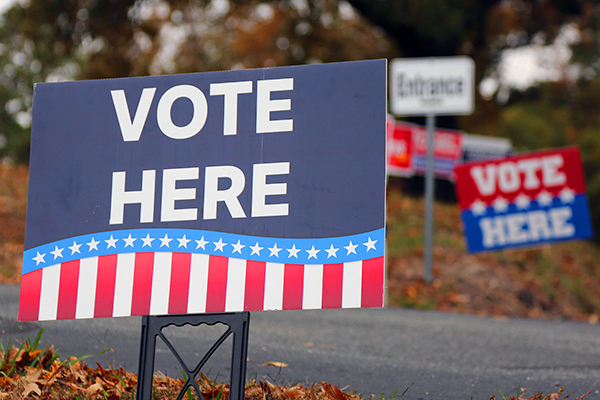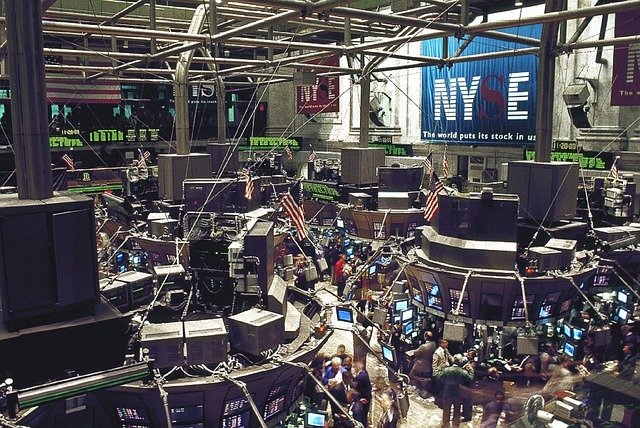Welcome to 2017! Looking back at 2016 it really was the year of surprises. Of course the biggest in this country was the results of the Presidential election (fitting I am writing this on Inauguration Day). However, there were many other surprises along the way. The biggest global shock was the result of the Brexit vote, the decision by the UK to leave the European Union. The next biggest may have been the Cubs winning the World Series after 108 years of futility (there are 108 stitches on a baseball, coincidence?), and Cleveland finally winning a major sports championship again. Other happenings that few, if any, predicted for 2016 would be the price of oil hitting a low of $26 and the 10year US Treasury hitting an all-time low of 1.36% (as well as trillions of dollars of international government debt trading at negative rates). Perhaps it was equally surprising that oil would double by year-end and the 10year would rally to 2.62% from the July low. A year ago we were led to believe we would get four interest rate hikes from the Fed during the year, well another surprise—we got one, a year after the first hike (the longest span in history between consecutive hikes). Perhaps most surprising of all was the US stock market reaction to all of these uncertain outcomes. While there was a solid sell off in the first two months of the year, stocks shook off all the rest of the uncertainty to finish with decent returns for the calendar year.
Part of the credit goes to Mr. Trump. The overwhelming opinion was that a Trump Presidency would create a rash of uncertain outcomes, which would make investors nervous and the markets would sell off. For much of the period between the National Convention and the election stocks did drop when the polls showed The Donald doing well, and rose when Mrs. Clinton extended her lead. In fact, most startling was that just a few days before the actual vote, the FBI announced it would not press charges against Mrs. Clinton seemingly paving the way for her to walk into the White House. Stocks rallied on that exact thought. As the results came in, it quickly became apparent the election was going to be close, and then as Mr. Trump was announced the winner in Ohio the futures started selling off. When he appeared to be the favorite to win Florida the selling accelerated. However, the tide turned with Mr. Trump’s victory speech. He was very Presidential; he thanked the right people; he acknowledged Mrs. Clinton’s hard fought campaign; and most importantly he gave the impression that perhaps Trump the President would not be like Trump the candidate. On top of that, investors seemed to look at his agenda, possibly for the first time with any real seriousness, and saw the potential for a Reagan-esque supply side economic boost. The combination of tax cuts, infrastructure spending and deregulation would be a massive help to the economy, so the optimism suggested. The stock market took off in the days following the election. The small cap index, the Russell 2000, went up an unprecedented 15 days in a row!
The euphoria of the last two weeks in November was certainly interesting to watch. Since then we have been very flat. The Dow Jones Industrial Average just experienced the tightest range for a 30 day period in its entire history—moving just 1.4% between the 30day high and 30day low. The reason being that investors realized it is one thing to promise the moon, quite another to actually deliver it. According to David Rosenberg (in a speech delivered to the CFA Society of Colorado, 1/17/17), there is precedent that most incoming Presidents are able to pass about 50% of their campaign promised agenda. The question is which half. Additionally, to me, it seems that all of the good parts of Mr. Trump’s agenda have been priced into the market and none of the potential bad things have been. The flatness of the last six weeks has been a reflection of the uncertainty that exists in how much can Mr. Trump actually accomplish, and secondly, how much of that will actually impact the economy in the short term.
The biggest hurdle to the Trump plan is the fact there are still a lot of fiscally conservative Republicans in the House. These members will not easily be convinced to cut taxes AND increase spending at the expense of increasing the budget deficit and therefore adding to the extreme debt level. Let’s take taxes first: there is evidence of tax cuts adding a stimulus to the economy and there is no debate that the US corporate tax rate is one of the highest in the world. Mr. Trump wants to take the tax rate from 35% to 15%. Any cut would likely help, but given the average large US corporation pays a 23% tax rate, Mr. Trump would have to get it below 20% for it to really impact those companies. Smaller companies would benefit more as they have less exposure to lower, overseas corporate rates. As for personal income tax cuts—the odds of major progress there are less likely, although not impossible. Just simplifying the tax code could do wonders for the general outlook.
Running hand-in-hand with tax cuts are spending increases. This, the GOP conservatives are even less likely to support. The Tea Party will resist any serious increase of the national debt levels. Anyone remember how they almost shut the government down at the end of 2014 over extending the debt ceiling? Mr. Trump has pledged $1trillion of infrastructure spending over ten years. You will get no argument from me that this country is in serious need of infrastructure improvement, however, paying for it out of national borrowing is a deadly game of race against the clock. Meaning every dollar of additional debt puts a heavier damper on potential GDP growth; could the boost from the infrastructure add to GDP growth faster than the debt takes away? Dubious at best as there are few, if any, “shovel ready” projects. The expectation is any economic benefit from infrastructure improvements would not be felt until at least 2018.
A quick word on ObamaCare. There are a lot of Democrats, and a number of Republicans as well, who believe that universal health care coverage is a good thing. Perhaps ObamaCare was not constructed well, and how to pay for it was not necessarily as concerning as the concept of getting it passed. The bottom line is the Senate is unlikely to just repeal it without a replacement. The GOP is about to find out how difficult it is to create a passable health care coverage bill. I would not expect this process to be done quickly.
Now we can address deregulation. This is the one place where I am truly optimistic. Any reduction in energy exploration regulations could be a boon to the sector and to the economy (I am going to leave the environmental argument aside for this letter—and just focus on the near term impact). Lower energy prices affect all of us like a tax cut, yet without the government losing revenue or having to increase spending; and lower income folks for whom energy is a bigger percentage of their annual expenses would experience a greater benefit. Furthermore, deregulation of the financial industry could also make it easier for small businesses to get loans and the middle class to get mortgages. Although, I will be the first to say, I would not expect the banks to be in a rush to roll back the fees that have been put in place over the last ten years which have allowed them to survive the zero interest rate period.
This brings us to the potentially dark side. In my opinion there is very little to be gained from tariffs. Smoot-Hawley is an excellent example of what happens when governments intervene in international trade relations. To attempt to avoid being political I will refrain from discussing the concept of renegotiating the trade pacts currently in place. Perhaps there is an element of good that could come from wringing more favorable terms from those. But once tariffs or border taxes start being implemented, we face economic slowdown and increased inflation. And that is assuming the other countries do not retaliate—which is unlikely they would just sit idle.
The second biggest hurdle to the success of Mr. Trump’s plan, other than the inability to get it through Congress, is simply the circumstance in which the country finds itself. President Reagan came into office when tax rates were very high, interest rates were very high, debt levels were (relatively) very low, the country was just exiting the malaise of the late 1970s, and had an ally across the aisle in Speaker Tip O’Neal. Mr. Trump is entering the Oval Office with debt levels at all-time highs, interest rates barely above all-time lows, an economy already in the second longest expansion ever at eight years and bipartisanship practically nonexistent. President Obama was unfriendly to business but the stock market tripled during his terms due to the Fed doing everything they could to stimulate the economy. President Trump may be the most business friendly president ever, but will be dealing with a Fed that likely is raising rates steadily, and may accelerate their pace if Mr. Trump’s policies stoke inflation higher. Of the last 13 times the Fed has implemented a series of interest rate hikes the economy has entered a recession 10 of those times within two years of the first hike.
As an investor I am leery that the Trump optimism is going to fade in 2017 should his policies fail to pass, or pass at levels that fall short of his campaign promises. I am willing to admit that as a negotiator, Mr. Trump may have been setting the bar very high, knowing full well he would be willing to settle for something lower. While it is possible that he can jump start the “animal spirits” which can create economic momentum, ramping up the debt from current levels is not going to be popular on Wall Street, even if it is on Main Street. For the time being I am content to watch The Donald’s first 100 days. The more successful he is getting things done, the better it will be for the markets and maybe the DJIA can crack that elusive 20,000 level. However, the more static he gets from Congress the more likely the optimism begins to wear off.
These uncertain times present investment opportunities, and volatility can be good when it goes in the right direction. We continue to maintain diversified portfolios for our clients. Over the long-term this is the most prudent direction to follow, and will add value over time as we are able to buy the sectors that struggle the most. That said, we are underweight fixed income as wage inflation has been picking up and the Fed is acting more hawkish (meaning more likely to raise rates). For better or for worse, Mr. Trump is our 45th President. I am not going to sell him short, as everyone who has done that the last two years has been dead wrong. But it does look like he has some major headwinds to negotiate that neither his immediate predecessor nor the previous few GOP Presidents had to navigate. The 100 days starts today—we will have a better read on things by the time the next edition of this newsletter is composed.





